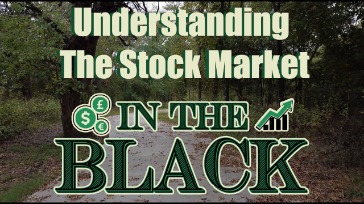Content

Like index funds, ETFs allow investors to pool their money in a fund made up of stocks, bonds, and other assets. Unlike index funds, however, which can only be traded once a day at the end of each trading day, ETFs can be traded like a stock—meaning their share prices can fluctuate throughout the trading day. JSI uses funds from your Treasury Account to purchase T-bills in increments of $100 “par value” (the T-bill’s value at maturity). The value of T-bills fluctuate and investors may receive more or less than their original investments if sold prior to maturity. T-bills are subject to price change and availability – yield is subject to change.
- Whether you invest in an exchange-traded fund or an index fund, how much you kick in is up to you.
- The index comprises a variety of industries, including technology, healthcare, and energy.
- If intraday liquidity is important to you, consider an S&P 500 ETF over an index fund.
- If you don’t have a lot of capital to invest upfront, be sure to shop around for brokerage accounts that meet your needs and align with your budget—there are many available that offer low-fee trading options.
- As countries without tax treaty with the US, non-US residents investing in the US stock market are taxed 30% on dividends received.
We are an independent, advertising-supported comparison service. As of May 16th, 2023, the 10-year average annualized return of the S&P 500 is 9.57% according to data from Morningstar. But “if you wanted all of the S&P 500 stocks, it would be very tedious and expensive to purchase them this way,” says Aviva Pinto, managing director at Wealthspire Advisors. Together, these three sectors account for more than 50% of the S&P 500, reflecting the dominance of technology in the U.S. economy.
S&P 500 – participate in economic growth.
Nearly all major brokerages and fund companies now offer some type of S&P 500 fund. Investors may access these funds through financial advisors, full-service brokers, or discount brokers. If you need some guidance, we break down some of the basics of S&P 500 index investing through ETFs and mutual funds. If you don’t want a mutual fund or ETF, you can hand-select individual stocks of companies you want to invest in. Keep in mind that investing in a single company increases the risk and volatility of your investment, and will require thoughtful research and stock performance analysis. The above content provided and paid for by Public and is for general informational purposes only.
You may want to consider an S&P 500 index fund or exchange traded fund (ETF) to help you gain exposure to all those stocks. Stash assumes no obligation to provide notifications of changes in any factors that could affect the information provided. This information should not be relied upon by the reader as research or investment advice regarding any issuer or security in particular.
Please ensure you understand how this product works and whether you can afford to take the high risk of losing money. Over time, this index of major U.S. companies has proven remarkably resilient. The S&P 500 is an index of 500 publicly traded large U.S. companies and many believe it is the best gauge of U.S. stock market performance. As of year-end 2022, its market value was $33.8 trillion, which is roughly equivalent to the combined economic output of the U.S., Japan and Germany. The ETFs comprising the portfolios charge fees and expenses that will reduce a client’s return. Investors should consider the investment objectives, risks, charges and expenses of the funds carefully before investing.
Can I sell my S&P 500 shares in the UK?
“The trick is not to pick the right company. The trick is to essentially buy all the big companies through the S&P 500 and to do it consistently and to do it in a very, very low-cost way,” he told CNBC in 2017. During the Berkshire Hathaway annual meeting in 2020, billionaire and legendary investor Warren Buffett told the audience, “in my view, for most people, the best thing to do is own the S&P 500 index fund.” The dividend yield is a measure of the amount of dividend income a shareholder receives in relation to the price of the stock. According to the S&P Dow Jones Indices factsheet, the dividend yield for the S&P 500, as of May 2022, was 1.54%.
Check out our listing of the best total market bond index funds to figure out how best to build your two- or three-fund portfolio. “When you buy the S&P 500, 90% of the time you’re likely to outperform an active portfolio manager picking large-cap stocks,” says Joe Favorito, managing partner at Landmark Wealth Management. If you want an inexpensive way to invest in S&P 500 ETFs, you can gain exposure through discount brokers. These financial professionals offer commission-free trading on all passive ETF products. But keep in mind that some brokers may impose minimum investment requirements. But relative to the downsides of many investment types, the flaws of S&P 500 funds seem relatively minor, especially when used as a part of your overall portfolio and held for the longer term.
Only consider direct indexing if you are experienced in managing investments and tax-loss harvesting. Like FIAs, index universal life insurance policies that use the S&P 500 to increase a death benefit can be an excellent way to get exposure to the index without taking on the risk of loss. First, however, it’s essential to understand how these products work before investing. Both the Nasdaq 100 and Nasdaq Composite are market-cap weighted like the S&P 500. However, the Nasdaq 100 doesn’t include any financial companies.
Subscribe to the Investor Junkie Newsletter!
The content created by our editorial staff is objective, factual, and not influenced by our advertisers. Our goal is to give you the best advice to help you make smart personal finance decisions. We follow strict guidelines to ensure that our editorial content is not influenced by advertisers. Our editorial team receives no direct compensation from advertisers, and our content is thoroughly fact-checked to ensure accuracy.
However, as profits and losses will be calculated based on your total position size, these can substantially outweigh your margin amount, so ensure you always trade within your means and manage your risk. Create and fund you CFD trading account – start by filling in our application form. By clicking continue, you will be taken to a website that is not affiliated with Merrill and may offer a different privacy policy and level of security. Merrill is not responsible for and does not endorse, guarantee or monitor content, availability, viewpoints, products or services that are offered or expressed on other websites. The U.S. is a global innovation juggernaut and home to world-leading technology firms, many of which are listed on the S&P 500.
Mutual funds that track the S&P 500 usually include most (if not all) of the stocks from the 500 companies comprising the S&P. This is so they can match the performance of the index as closely as possible. Specifically, an index is a tool (like a magnifying glass) used to examine what’s happening in a stock market. The S&P 500 is one of the most widely used proxies for the overall health of the stock market—the stocks forming the S&P 500 represent roughly 80% of the market’s available market capitalization. An ETF is an instrument that mirrors the performance of an underlying index. Essentially, by investing in the S&P500, you’ll get exposure to the finest companies in the US stock market.
S&P 500 index funds may differ slightly in the exact makeup of their portfolios. The Vanguard S&P 500 Growth ETF, for example, emphasizes the growth-oriented companies in the S&P 500 (ones expected to appreciate faster than average stocks). The Invesco S&P 500 High Dividend Low Volatility ETF specializes in stocks that offer especially strong dividends. Although it’s limited to large-cap companies, the S&P 500 is diverse enough “to reflect all major sectors of the economy,” says Clark — from industrials to information tech to consumer goods to health care. The companies within it are collectively worth about 80% of US stocks’ total value. That’s why there are so many stocks included in the Nasdaq Composite and why the number of stocks in the index changes often.
What are stock market indexes?
If you’re buying an ETF, look for a broker that offers ETFs without commissions, a practice that has become the norm. Standard & Poor’s 500 index funds are among today’s most popular investments — and it’s little wonder why. The S&P 500 index on which these funds are based has returned an average of about 10 percent annually over time and represents hundreds of America’s best companies.

The S&P 500 index, short for Standard & Poor’s 500 index, is one of the most widely traded and talked about stock indexes in the world. Invest, an individual investment account which invests in a portfolio of ETFs (exchange traded funds) recommended to clients based on their investment objectives, time horizon, and risk tolerance. Many people believe that investing in the S&P 500 is the safest way to ensure a good return on their investment. After all, the fund tracks the performance of America’s 500 largest companies and has a proven track record of delivering solid returns.
The other six sectors—communication services, consumer staples, energy, utilities, materials, and real estate—combined make up the rest. If you want to invest in the S&P 500, there are a few costs to consider. While the S&P 500 is an index of U.S. companies only, there are no restrictions as to who can invest in it.
One key point is that although these are 500 large companies, there’s a wide range of valuations. Several of the largest companies in the index have market caps in excess of $1 trillion. This is more than 200 times larger than the smallest S&P 500 companies, which have market caps between $6 billion and $7 billion.

Together, that data forms a picture that helps investors compare current price levels with past prices to calculate market performance. For example, the Nasdaq index closely tracks the technology sector. So if you want to know how technology companies are performing, https://g-markets.net/helpful-articles/how-to-become-a-successful-forex-trader-in-5-steps/ you’d want to look at the Nasdaq stock index. As long as your time horizon is three to five years or longer, an S&P 500 index fund could be a good addition to your portfolio. However, any investment can produce poor returns if it’s purchased at overvalued prices.
“This adjustment in market exposure may be worth an extra basis points in expense ratio in some cases,” Toberman added. The diversified nature of S&P index funds means that an investor probably won’t score big from a fast-growth stock — but also won’t have to stay up nights worrying about investing in a lemon of a company. If you want to own a broad slice of the US’ biggest and best securities, says Benningfield, “an S&P 500 index fund is a great place to start.” Next, the market caps of all S&P 500 components are added together.

